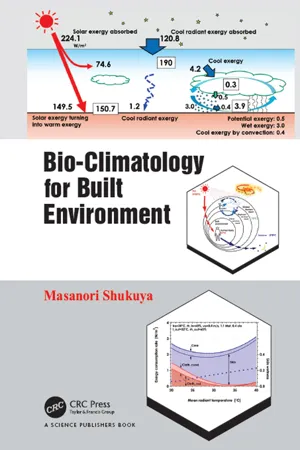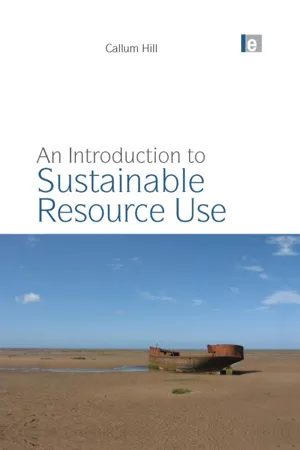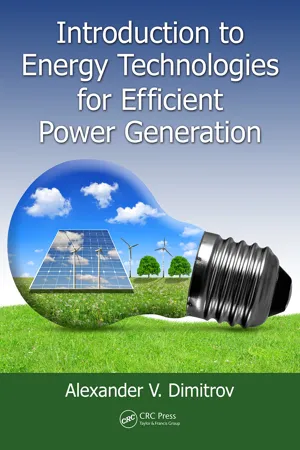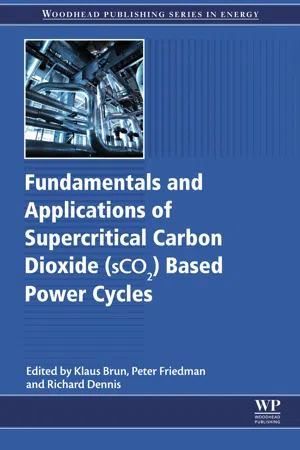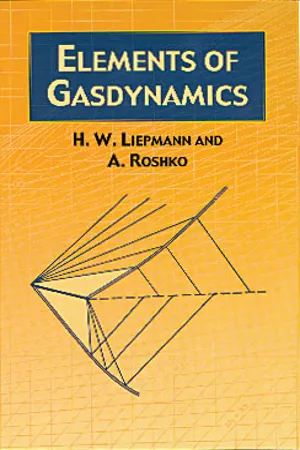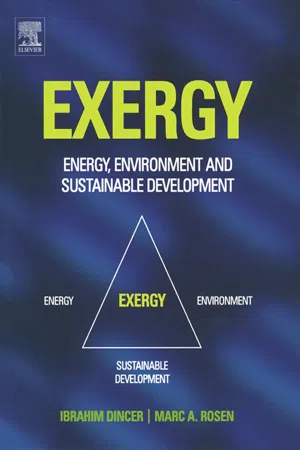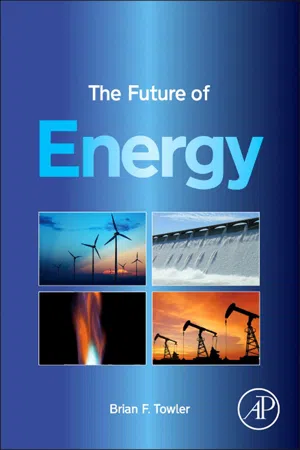Physics
Thermodynamics and Engines
Thermodynamics is the study of energy and heat transfer. It explores how energy moves and changes within a system. Engines, which are devices that convert energy into mechanical work, are often analyzed using thermodynamic principles to understand their efficiency and performance. This field of study has led to the development of various types of engines, such as steam engines and internal combustion engines.
Written by Perlego with AI-assistance
Related key terms
Related key terms
1 of 4
Related key terms
1 of 3
10 Key excerpts on "Thermodynamics and Engines"
- eBook - ePub
- Michael J. Moran, Howard N. Shapiro, Daisie D. Boettner, Margaret B. Bailey(Authors)
- 2018(Publication Date)
- Wiley(Publisher)
CHAPTER 1 Readings
Medical professionals rely on measurements of pressure and temperature, introduced in Secs. 1.6 and 1.7 .Engineering Context
Although aspects of thermodynamics have been studied since ancient times, the formal study of thermodynamics began in the early nineteenth century through consideration of the capacity of hot objects to produce work. Today the scope is much larger. Thermodynamics now provides essential concepts and methods for addressing critical twenty-first-century issues, such as using fossil fuels more effectively, fostering renewable energy technologies, and developing more fuel-efficient means of transportation. Also critical are the related issues of greenhouse gas emissions and air and water pollution.Thermodynamics is both a branch of science and an engineering specialty. The scientist is normally interested in gaining a fundamental understanding of the physical and chemical behavior of fixed quantities of matter at rest and uses the principles of thermodynamics to relate the properties of matter. Engineers are generally interested in studying systems and how they interact with their surroundings. To facilitate this, thermodynamics has been extended to the study of systems through which matter flows, including bioengineering and biomedical systems.The objective - eBook - ePub
- Masanori Shukuya(Author)
- 2019(Publication Date)
- CRC Press(Publisher)
Chapter 7 Thermodynamics 7.1 Work, heat and energyA variety of artificial systems driving our societies at large including contemporary buildings and cities are realised by the development of physical science and its engineering applications. The physical science taught in modern academia has been usually considered to consist of the following three branches: mechanics, electromagnetics and thermodynamics; we can say so looking at the curricula arranged for science and engineering education in universities.Thermodynamics stands unique compared to mechanics and electromagnetics since it focuses directly on “dispersion” that necessarily takes place in actual macroscopic phenomena. In other words, as far as the mechanics and electromagnetics confine their focus on the behaviour of celestial bodies or charged particles, they may look having nothing to do with thermodynamics.Nonetheless, all of the mechanical and electromagnetic phenomena that we experience in everyday life can never escape from thermodynamic phenomena, that is, the dispersion of heat and matter involved. The branches of mechanical and electrodynamic sciences, having been taught as major courses, tend to ignore the consequence of dispersion and thereby seem to result in letting those students ignore the thermodynamic consequence of actual macroscopic phenomena; therefore, they should be further re-developed taking thermodynamics into consideration so that one can develop his or her own holistic and connective ways of thinking in learning mechanics and electromagnetics. This is, I think, important in particular for the contemporary technology to advance further towards more environmentally-benign and better solutions.In Chapter 2 , subsection 2.5.2 , we already discussed how a heat engine can produce “work” by a series of thought experiment. We also already made clear what the “heat” and “temperature” are in Chapter 6 , section 6.2 - eBook - ePub
- Tangellapalli Srinivas, N. Shankar Ganesh, R. Shankar(Authors)
- 2019(Publication Date)
- Apple Academic Press(Publisher)
CHAPTER 3 BASIC THERMODYNAMICS ABSTRACTThe study and evaluation of any thermal system need basic thermodynamics principles. They provide the primary and essential steps of system planning, namely, thermodynamic modeling, simulation, analysis and optimization. The mass balance, energy balance, and exergy balance follow the laws of thermodynamics. The properties of working fluid such as pressure, temperature, volume, entropy, internal energy, enthalpy, exergy, etc. can be developed from the thermodynamic relations. The discussed contents in this chapter are concepts, laws of thermodynamics, thermodynamic processes, and fundamental relations.3.1 INTRODUCTIONThermodynamics is a branch of science that focuses on heat, work, its conversion, and evaluation. It plays a great role in the thermal system development. The main functions of thermodynamics in engineering are all managerial functions such as planning, coordination, etc. Surrounding us, the nature has tremendous amount of energy. The energy always tries to convert one form to another form. Thermodynamics deals about these energy interactions in a systematic way with reference to certain rules called thermodynamic laws. Sadi Carnot developed many theories in thermodynamics and he is called the father of thermodynamics. Thermodynamics deals with energy, entropy, exergy, and equilibrium. Thermo-economics deals with economics in addition to these four “e”s. All the thermodynamics laws, namely, zero, first, second, and third are designed based on logics and without mathematical proof.In engineering, the solutions can be categorized into two groups: one is rating (finding the capacity) and the second is sizing. The quantification of energy interactions and capacity finding are the part of rating of an engineering system. Finding the dimensions of a system through a system of methodology is called sizing or design. Thermodynamics deals only with the rating and it can support the sizing which is the limitation of thermodynamics. But the data or information required to do the size can be obtained through the thermodynamic evaluation. The use of thermodynamics is vast and used in many applications such as aerodynamics, automobile engineering, power plants, refrigeration and air conditioning, cogeneration, steam engines, internal combustion engines, steam and gas turbines, fuel cells, thermo-electric and thermo-ionic generators, chemical reactions, phase equilibrium, etc. Thermodynamics is similar to the engineering mechanics which is the main origin of engineering design subjects. Similar to engineering mechanics, thermodynamics is the mother of thermal engineering subjects. In the engineering mechanics, force balance and moment equations solve the structure under the equilibrium condition. In thermodynamics, the mass balance and energy balance solves the performance of thermal system. - eBook - ePub
- Callum Hill(Author)
- 2012(Publication Date)
- Routledge(Publisher)
2
Thermodynamics
(the science of energy and change)
Introduction
Thermodynamics is one of the most powerful tools at our disposal for the study of the sustainability of processes. Although a development that was associated with the invention of the steam engine, it has proved to be of much wider application in the fields of chemistry, ecology, biochemistry, cosmology and information theory. If we wish to understand anything about the sustainability of a process, it is clearly important to know about energy use, recycling and other facets concerned with the management or utilization of resources and it is thermodynamics that provides the basis for the answers to many of the questions. Although this book concerns physical resources and their exploitation, it is necessary to use energy in the processing of these materials and so it follows that we have to understand the properties of energy and how it interacts with matter.What is energy?
Energy is used to move things, to drive machinery, to provide heat and electricity, and to stay alive. Without energy there would be no change and time would not exist. But what exactly is it? For many years energy was seen as a mysterious force that acted upon matter and somehow gave it ‘life’ and it was given a name that reflected this idea, ‘vis viva’. Even now, much misunderstanding exists; it is common to see the words ‘energy’ and ‘power’ used interchangeably although they mean different things, or references to energy ‘consumption’, whereas energy is always conserved. There is no doubt that something is being consumed when we use energy and we shall examine later in this chapter what this something is. - Alexander V. Dimitrov(Author)
- 2017(Publication Date)
- CRC Press(Publisher)
2Conversion of Thermal Energy into Mechanical Work (Thermal Engines)Energy-related (power) technologies may be treated as a combination of engineering-technical methods of energy and work conversion employed to facilitate human life. They are divided into two main groups. The first group comprises technologies of heat conversion into another type of energy (mechanical, electrical, electromagnetic, etc.) while the second one comprises technologies of heat transfer, accumulation, and regeneration. Each thermal technology discussed herein will be illustrated by specific physical schemes and devices. We shall consider them in the following order:•Technologies of mechanical work performance (so called thermomechanical technologies) •Technologies of generation of electrical energy (thermoelectric technologies) •Technologies of heat transformation (regeneration and recuperation) •Technologies of heat transfer and collection (transfer and accumulation) •Technologies creating comfortable environment (air conditioning and ventilation)Thus, we will treat a certain technology as an object of study of respective scientific-applied research fields, on one hand, and we will follow the teaching programs on “Power engineering,” “Transport management” and “General mechanical engineering,” on the other hand.2.1 Evolution of Engine TechnologiesAs is known from physics, energy conversion follows a natural course, that is, energy of motion of macro- and microbodies (popular as mechanical energy) is converted into heat by mechanisms that are studied by tribology (including dry, semi-dry, viscous, or turbulent friction). No opposite transformation is observed in nature. Heat conversion into energy needed for the operation of machines and mechanisms was an impossible task for primitive people as well as for those living in slave-holding* and feudal†- eBook - ePub
- Vinay Ambegaokar(Author)
- 2017(Publication Date)
- Dover Publications(Publisher)
9 Heat, work, and putting heat to work A man hath sapiences thre Memorie, engin and intellect also Chaucer Engines are, etymologically and in fact, ingenious things. By the end of this chapter we shall understand heat-engines, which are devices that convert ‘heat’ – an intuitive idea to be made precise here – into pushes or pulls or turns. First, however, we need to systematize some of the things we have already learnt about energy and entropy, and thereby extract the science of Thermodynamics from the statistical viewpoint of the last chapter. Thermodynamics is a theory based on two ‘Laws,’ which are not basic laws of nature in the sense mentioned in Chapter 1, but commonsense rules concerning the flow of energy between macroscopic systems. From the point of view we are taking here, these axioms follow from an understanding of the random motion of the microscopic constituents of matter. It is a tribute to the genius of the scientists – particularly Carnot, Clausius, and Kelvin – who formulated thermodynamics as a macroscopic science, that their scheme is in no way undermined by the microscopic view, which does, however, offer a broader perspective and open up avenues for more detailed calculations. (For example, effusion – discussed at the end of the last chapter – lies beyond the scope of thermodynamics.) Work, heat, and the First Law of Thermodynamics The First Law of Thermodynamics is about the conservation of energy. The concept is the one we encountered in Chapter 6 where, you will recall, we found that a falling body could be thought of as converting potential energy into kinetic energy – the sum of the two remaining constant. The important distinction for thermodynamics is somewhat different - Klaus Brun, Peter Friedman, Richard Dennis(Authors)
- 2017(Publication Date)
- Woodhead Publishing(Publisher)
For brevity, relatively few references are given, but introductory material may be found in any thermodynamics textbook, such as Moran and Shapiro (2008) or Klein and Nellis (2012). References on second law analysis tend to be in advanced thermodynamics textbooks, such as Wark (1995) or more specialized references such as Moran (1982) or Pioro and Romney (2008). In addition to thermodynamics, basic heat transfer and fluid mechanics relationships are discussed, with an emphasis on the effect on plant balance equations. Thermodynamics is the study of energy transformations and the relationships among properties of substances. The first law of thermodynamics states that energy cannot be created or destroyed, or more succinctly, energy is conserved. Heat engines are thermodynamic systems that receive heat from a heat source and produce work. According to the second law of thermodynamics, heat engines must also reject a portion of the heat received to a lower temperature heat sink. The heat supplied can result from burning fossil fuels, process waste heat, geothermal sources, solar energy, or nuclear fission. The heat sink can be an environmental component, such as the atmosphere or a body of water, or alternatively, the heat can be used for other applications such as industrial process heat or as a heat source for a heat engine operating at lower temperatures (so-called bottoming cycles). Heat engines, such as the example shown in Fig. 3.1, operate in thermodynamic cycles, which are a series of processes that repeat over time and use a working fluid, which is traditionally, and most commonly either gas such as air, or a vapor undergoing a phase change such as water- eBook - ePub
- H. W. Liepmann, A. Roshko, A. Roshko(Authors)
- 2013(Publication Date)
- Dover Publications(Publisher)
CHAPTER 1Concepts from Thermodynamics 1.1 IntroductionThe basis of any physical theory is a set of experimental results. From these special primary observations, general principles are abstracted, which can be formulated in words or in mathematical equations. These principles are then applied to correlate and explain a group of physical phenomena and to predict new ones.The experimental basis of thermodynamics is formalized in the so-called principal laws. The law of conservation of energy, which thermodynamics shares with mechanics, electrodynamics, etc., is one of these principal laws. It introduces the concept of internal energy of a system. The other principal laws of thermodynamics introduce and define the properties of entropy and temperature, the two concepts which are particular and fundamental for thermodynamics.The principles laid down in these fundamental laws apply to the relations between equilibrium states of matter in bulk. For instance, thermodynamics yields the relation between the specific heats at constant pressure and at constant volume; it relates the temperature dependence of the vapor pressure to the latent heat of evaporization; it gives upper bounds for the efficiency of cyclic processes, etc.Fluid mechanics of perfect fluids , i.e., fluids without viscosity and heat conductivity, is an extension of equilibrium thermodynamics to moving fluids. The kinetic energy of the fluid has now to be considered in addition to the internal energy which the fluid possesses when at rest. The ratio of this kinetic energy per unit mass to the internal energy per unit mass is a characteristic dimensionless quantity of the flow problem and in the simplest cases is directly proportional to the square of the Mach number. Thermodynamic results are taken over to perfect fluid flow almost directly.Fluid mechanics of real fluids - eBook - ePub
Exergy
Energy, Environment and Sustainable Development
- Marc A Rosen, Ibrahim Dincer, Marc A. Rosen(Authors)
- 2007(Publication Date)
- Elsevier Science(Publisher)
Chapter 1THERMODYNAMIC FUNDAMENTALS
Publisher Summary
Thermodynamics plays a key role in the analysis of processes, systems, and devices in which energy transfers and energy transformations occur. Energy, entropy, and exergy concepts stem from thermodynamics and are applicable to all fields of science and engineering. This chapter focuses on the portion of the field of thermodynamics at the intersection of the energy, entropy, and exergy fields. It provides the necessary background for understanding these concepts, as well as basic principles, general definitions, and practical applications and implications. Illustrative examples are shown to highlight the important aspects of energy, entropy, and exergy. Energy management opportunities often exist to improve the effectiveness and efficiency with which energy is used. Most thermodynamic systems possess energy, entropy, and exergy, and thus appear at the intersection of these three fields. The basic phenomena like order and disorder as well as reversibility and irreversibility are also discussed. During the past several decades, exergy-related studies have received increasing attention from various disciplines ranging from mechanical and chemical engineering to environmental engineering and ecology. As a consequence, the international exergy community has expanded significantly in recent years.1.1 Introduction
Energy, entropy and exergy concepts stem from thermodynamics and are applicable to all fields of science and engineering. This chapter provides the necessary background for understanding these concepts, as well as basic principles, general definitions and practical applications and implications. Illustrative examples are provided to highlight the important aspects of energy, entropy and exergy.The scope of this chapter is partly illustrated in Fig. 1.1 - eBook - ePub
- Brian F. Towler(Author)
- 2014(Publication Date)
- Academic Press(Publisher)
How much heat can be transferred between two bodies depends on their temperatures and the method of heat transfer. Heat energy cannot be converted entirely into work or mechanical energy, electricity or any other form of energy. This has a big impact on the efficiency of heat engines. When fuel is burned in a heat engine, the chemical energy that is stored in the chemical bonds of the fuel molecules is released. This energy is transferred to the engine as heat; however, not all of that heat can be converted into mechanical energy. When people were developing and trying to perfect heat engines, such as the internal combustion engine, they discovered this limitation and had to understand it. The result was the formulation of the second law of thermodynamics.The seminal work in this area was due to a French engineer called Sadi Carnot. In 1824, he published a paper entitled, Reflections on the Motive Power of Fire and the Machines Needed to Develop This Power . This paper presented the idea that the amount of work done by a heat engine is due to the flow of heat from a hot to a cold body. Carnot’s understanding of heat was still mired in the incorrect caloric theory of heat, but his conclusions were still valid. His analysis determined that the theoretical heat that could be transferred to the heat engine was proportional to the temperature difference between the heat source (the hot body) and the heat sink (the cold body). This analysis allowed him to calculate the theoretical efficiency of a heat engine, which turned out to be much lower than the efficiency of other energy conversion processes.Using Carnot’s analysis, several people were able to deduce different statements of the second law of thermodynamics. Some of these are:
Index pages curate the most relevant extracts from our library of academic textbooks. They’ve been created using an in-house natural language model (NLM), each adding context and meaning to key research topics.
Explore more topic indexes
Explore more topic indexes
1 of 6
Explore more topic indexes
1 of 4

